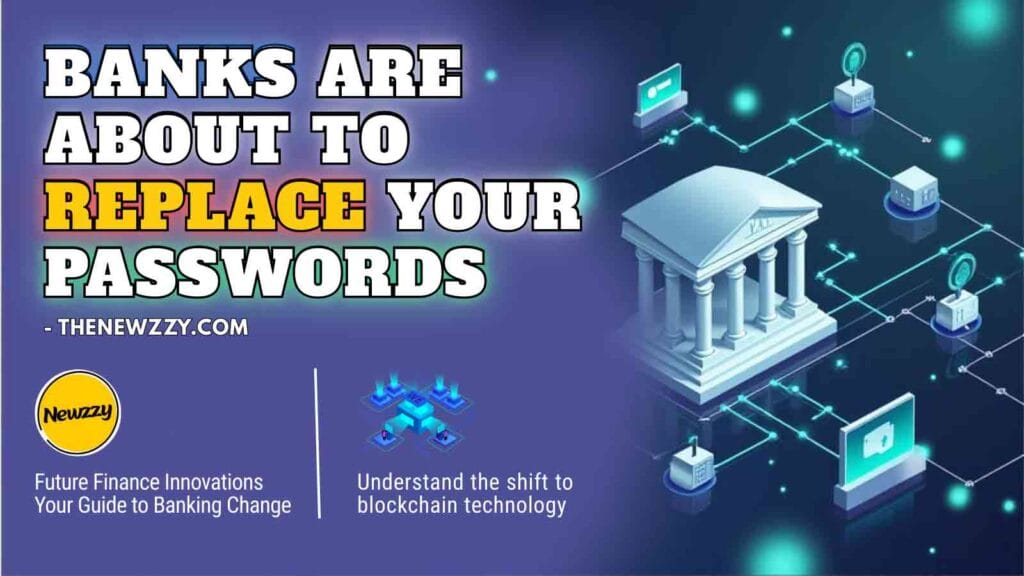Decentralized Identity in Banking systems: In 2023, more than $30 billion were lost to banks through fraud, which is an outrageous figure and a symptom of a basic weakness in our financial mechanisms. Decades ago, our banking account security depended on the loose blend of passwords, security questions and one-time passcodes (OTPs). Although those mechanisms were effective in the world that was not as interconnected, they cannot cope with the advanced cyber threats nowadays.
Read About: Dark Store Models Are Taking Over Your City | The Hidden World Behind 10-Minute Deliveries
However, the days of the centralized identity systems, where one institution holds the keys to our personal information, are becoming a security burden and it is causing data breaches of unimaginable scales, phishing attacks that seem to have no end and a constant risk of identity theft. However, what would happen when a more complex password is not the answer to this increasing crisis but a whole new form of thinking about identity? A blockchain-backed identity, known as decentralized identity, is possible, and it might be the future of fraud prevention in the banking sector, not larger and more fortified data silos.
Table of Contents
What Is Decentralization Identity?
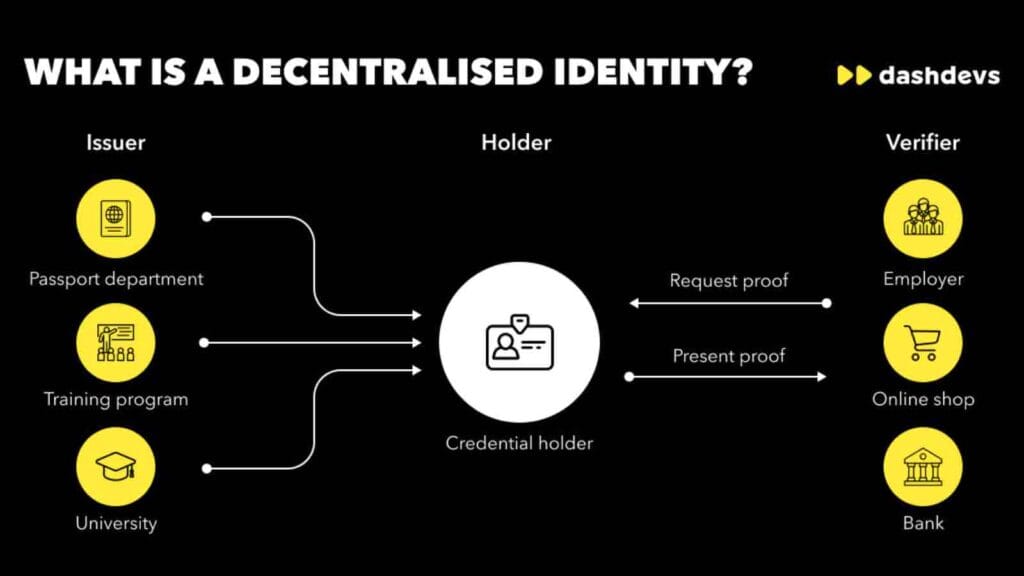
Decentralized Identity (DID) is a shift in the paradigm of managing digital identity. The DID places the person in absolute control unlike in traditional systems where an organization (such as a bank, government, or social media company) serves as the central authority to your identity. It is based on the fundamental concept of Self-Sovereign Identity (SSI) that is, users are in charge of owning and operating their own digital credentials, instead of leaving it to third parties.
Consider it in the following way, open a bank account in the present system; the bank photocopies your ID and puts it in its database. Whenever you are asked to prove your identity to other service, the other service may demand to be shown a copy of the same, or perhaps more frequently, you must undergo the entire process of proving your identity again.
The comparison is also much easier when it is a decentralized identity system: rather the bank having a copy of your ID, you are carrying a digital passport that cannot be tampered with. This digital passport is kept in a safe place in a personal digital wallet, and you can decide which part of it you can share when it is needed without providing the whole document.
Why the Existing Banking Identity Systems are flawed?
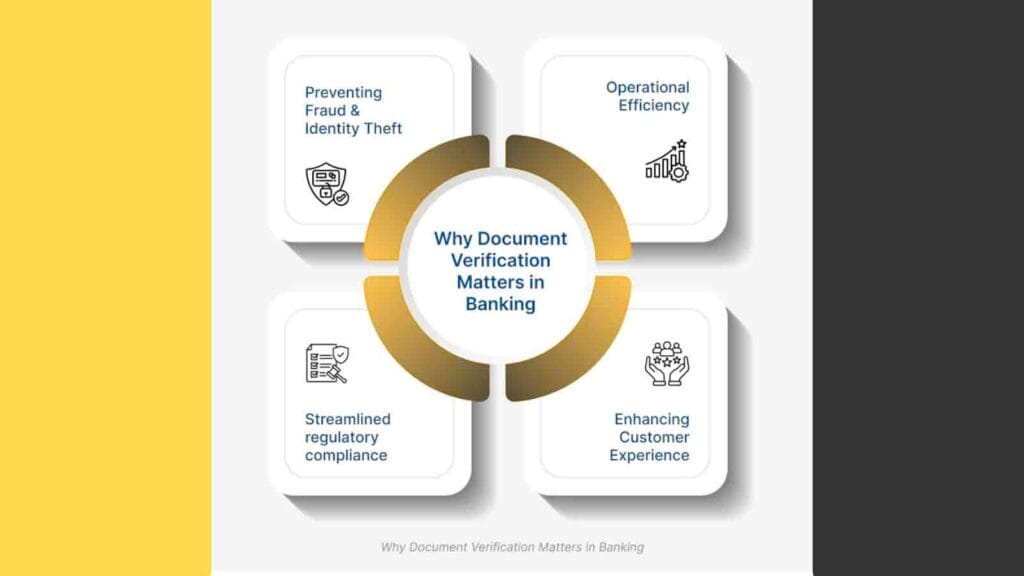
Our present banking identity systems have weaknesses which are not a secret, but rather an everyday reality to millions of people. Centralization is the cause of the issue.
- Banks and financial institutions have large databases of customer information including names, addresses, dates of birth, social security numbers, and account information, which are honeypots to hackers. To cybercriminals, these central databases are the gold medal, a honeypot that could hold all they require in large scale identity theft. One attack can destroy millions of accounts, causing devastating financial damages and the total loss of customer confidence.
- OTPs and passwords are phishable: It is probably the user who is the weakest link in any security chain. Phishing scams involving the deceitful nature of criminals who lure users to disclose their credentials have turned out to be a multi-billion dollar sector. In order to steal passwords and even OTPs, which are meant to be the final line of defense, criminals make counterfeited websites or send fraudulent text messages in order to steal them. The vulnerability of the given system is in the sense that an OTP, a temporary code, can be intercepted or socially engineered.
- The Rapid Bias to Online Banking and the Growth of Fintech Apps: Identity theft has a new path of spread due to the rapid transition to online banking and the increased number of fintech apps. Synthetic identity fraud which involves perpetrators using both a combination of authentic and fabricated information to form a new identity is an increasing menace. The existing KYC (Know Your Customer) and AML (Anti-Money Laundering) systems and procedures that involve third-party data collection during multiple services, take advantage of the situation by creating additional copies of sensitive information scattered across the web.
The Decentralized Identity in Banking
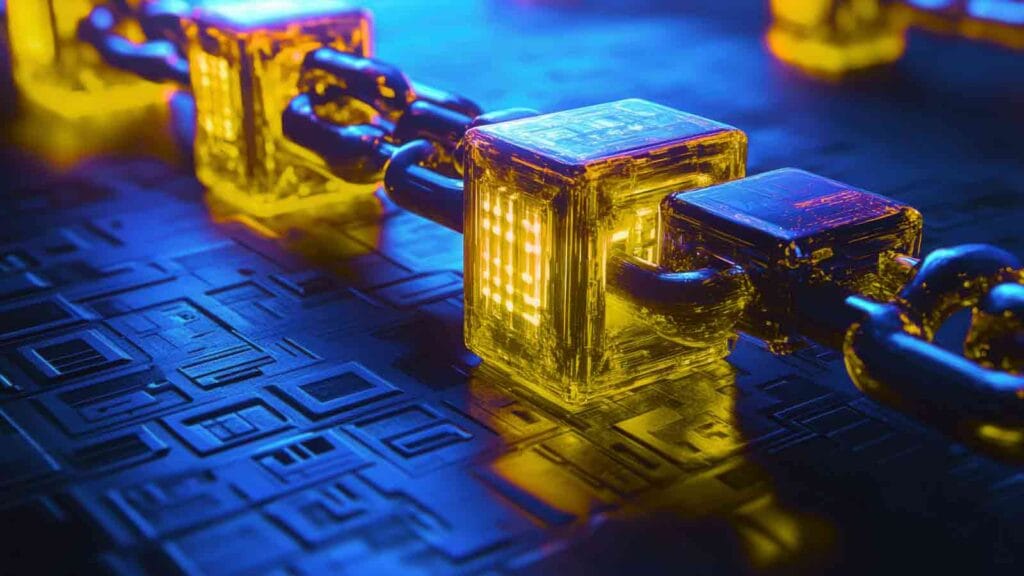
Decentralized identity utilizes blockchain technology to develop a better identity framework that is more secure.
The Trust Layer, blockchain: On the one hand, blockchain is a distributed, immutable registry. It functions as the identification layer to DID. Bank- when a bank authenticates personal identity, no copy of your ID is stored but a cryptographic credential is issued. This is an attestation that is digital in nature, which means that the Verifiable Credential (VC) is simply a certificate issued by XYZ Bank saying that this individual is who he claims to be.
The history of such issuance is kept in the blockchain, and this is un-modifiable and can be checked by anybody who possesses the authorized rights. Personal data are not stored in the blockchain, but rather a cryptographic attestation has been stored thereof.
Digital wallets (the New passport): Your identity is stored in a secure digital wallet, but it is under your control. It is not a cryptocurrency wallet, but rather an application on your smartphone or computer that has safe storage of your Verifiable Credentials. You use a VC out of your wallet when you need to demonstrate something.
Verifiable Credentials (VCs): Proving without Revealing: Verifiable Credentials are the solution to the next level. A VC is suitable instead of revealing all your personal data, giving the opportunity to demonstrate a certain fact. Taking an example, the second bank does not need to view your complete government ID to open a new account. They just have to ask a VC which responds, I am Bank A; this person has been proved and authorized by me. The new bank can use cryptography to ensure that it was actually issued by Bank A and it has not been manipulated.
This will minimize the amount of data that is exchanged to only that which is absolutely necessary and which includes demonstrating that you are over the age of 18 without necessarily displaying the date of birth.
The Advantages of Decentralised Identity For Banks and Customers
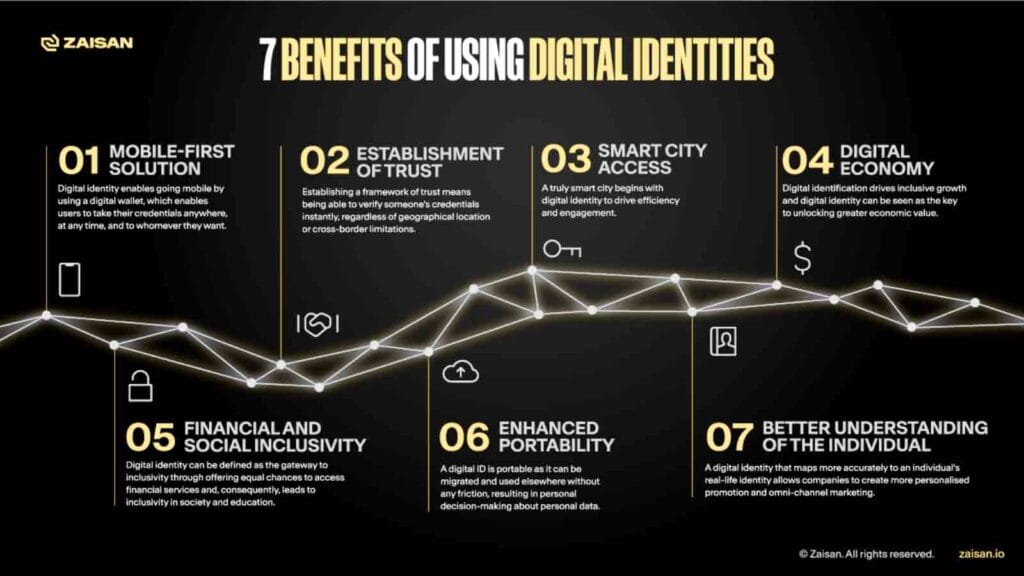
Introduction of DID is a win-win situation to the enterprises in finance and to customers.
- Less Fraud: With just one point of attack (compared to many) done away with, large-scale data breaches are virtually impossible with DID. Hackers have no one database about personal details. The fraud is eliminated at the first stage, as the system does not use a simple password or OTP, but the fraud-unassailable one based on cryptographic security.
- Improved Privacy: Customers have never had so much control of their own personal data. They determine what they are going to share and with whom, and how long. This has been made possible by the selective disclosure nature of VCs, which explains why they will only show the bare minimum of information necessary, which significantly minimizes their digital footprint.
- Quickened KYC & Onboarding: The laborious nature of completing identical paperwork when using each new bank or service is no longer a reality. Having a decentralized, reusable identity, a customer can do KYC with one bank and that provides the customer with a VC, which can be instantly used to prove his/her identity to another customer. This would shorten onboarding durations that take days to minutes.
- Financial Inclusion: To many unbanked people, particularly in the developing countries, having verifiable identity is a significant obstacle to access financial services. A digital ID created by a decentralized framework and being portable and digital would be able to give these populations the credentials by which they can open accounts, receive loans, and engage in the digital economy.
Use Cases Already Emerging
Although there is still a nascent phase of implementation, the use of decentralized identity in the financial industry is already taking form.
KYC Onboarding: Businesses are developing platforms which enable users to have their identity verified once and then use it to bring different services on board, including banks, fintech applications. This gets rid of data duplication in data collection and enhances usability.
Cross-border Payments: DID will simplify the tangled mess of compliance and regulatory verification that must be met for international payments. The proven identity and financial history of a person could be made available immediately and safely between financial institutions across national boundaries without having to go through the huge paperwork and take hours of waiting.
Credit Scoring: It would be possible to have a decentralized system which would enable the individual to provide a verifiable account of their financial transaction and creditworthiness to a lender without revealing their personal account information. This may result to a more precise and clear credit rating system that will make any individual more empowered.
CBDC integration: With the advent of Central Bank Digital Currencies (CBDCs) in various regions around the world, decentralized identity might become the base of the implementation. It would be able to allow secure and private transactions and still let necessary AML/KYC checks, as well as come up with a balance between user privacy and regulation provisions.
Challenges & Limitations in Decentralized Identity
Although it has tremendous potential, there are no obstacles on the way to mass adoption of DID.
Regulatory Uncertainty: There is a complex patchwork of global regulations. Various countries offer various regulations in the sphere of data privacy (e.g., GDPR in Europe, CCPA in California). An international decentralized identity system would involve the level of cooperation and standardization never seen before among regulators.
User Adoption: Will the common man be ready to accept a new technology and take care of it? The idea of a digital wallet, self-sovereign identity is a big change in the perspective of the more used model of centralized accounts. The technology should be user-friendly and simple to use to achieve mass adoption.
Technology Barriers: one of the problems is interoperability. What is the method of identifying and accepting a Verifiable Credential in one blockchain to be validated by a bank in a different blockchain? This will necessitate the creation of standard practices and guidelines.
Possibilities of Vertical losses: The digital wallet is the biggest risk to lose. The question is What happens to my phone, and I lose it, and the digital ID is stored there? Fail-safes and secure mechanisms of recovery are essential. This might be multi-factor authentication, biometric backups or the possibility of easily moving credentials to a new device, which is an issue that the DID community is actively solving.
Pilot Projects and Real-World Applications
DID has been transitioning into the practice phase, and various large-scale projects exist.
European Union EIDAS 2.0: Europe is one of the pioneers in this field, and its new eIDAS 2.0 rule establishes the protocols of a European Digital Identity Wallet. It is an effort to grant all EU citizens safe and verifiable digital identity to make cross-border operate smoothly in the provision of both the governmental and the non-governmental services, including the banking sector.
Microsoft Entra Verified ID: Microsoft has been a pioneering and major force in the DID field. Their Entra Identified ID platform enables companies to issue and verify credentials. They have undertaken pilots with banks in order to make the process of onboarding streamline and enhance security.
Hyperledger Indy / Sovrin Foundation: The open-source projects have played a significant role in becoming the backbone of the decentralized identity technological foundation. Hyperledger Indy ledger is explicitly created with DID in mind, and one of the more well-known networks of public utility networks in the field of self-sovereign identity is the Sovrin network.
The Aadhaar + Blockchain Experiments India: India has a centralized biometric identity system called Aadhaar, which is a major success and controversial endeavor of its own. Nevertheless, numerous experiments have been conducted on how to introduce a decentralized system with a blockchain-based layer on top of it to provide users with a better degree of control over their data and improve privacy.
The Future of Decentralization Identity in Banks
It is a fact that the trend leading to a more decentralized and privated digital world exists. To banks, decentralized identity should not be treated as an issue of security; it is a business strategy to keep up in a financial environment that has changed significantly in a shorter period of time.
One significant stimulus will be the integration with the Central Bank Digital Currencies (CBDCs). A digital currency needs a solid, secure and secluded identity layer. The ideal solution is offered by DID, which enables programmable money, at the same time making transactions verifiable even without providing personal information.
The rise of the Web3 economy will require banking to be more interlinked and normative into a decentralized internet. The competitive strength of offering a smooth identity layer of Web3 applications will arise.
My prediction? It is not one work and done, as the adoption will be facilitated. Decentralized identity can easily become a reality in place of a broken and outdated system of passwords and OTP in the next 5-10 years because the technology will be perfected and the regulatory frameworks adjusted accordingly, establishing a more secure, private, and user-controlled banking system.
FAQs
What is decentralized identity in the banking industry?
Decentralized identity in banking refers to a system where the customers and not the bank have control over their digital identity. It offers blockchain technology to develop reusable tamper-proof digital credentials that enable an individual to establish their identification or age without disseminating their complete details.
What is the weakness of decentralized identity?
The identity is decentralized and no single and centralized database can be used to commit fraud. It is based on cryptographically secure credentials, which are issued and stored in the user personal digital wallet and as such phishing and massive data breaches are rendered ineffective.
Can decentralized identity be safe?
No, decentralized identity is structured to secure more as compared to the classic systems. It employs state-of-the-art cryptography and distributed ledger in order to make credentials secure and non-forgeable. It is safe compared to using passwords and OTPs that are easy to phish because of the risk of losing your digital wallet with the help of secure recovery methods.
When can the banks embrace blockchain identity?
Although there are banks that are already on pilot projects and experimenting with blockchain identity, mass adoption is likely to occur within 5 to 10 years. This time-based explanation explains why regulatory clarity is necessary and why common technology standards need to be developed and why the problem of user adoption must be addressed.
For more updates follow: Latest News on NEWZZY

